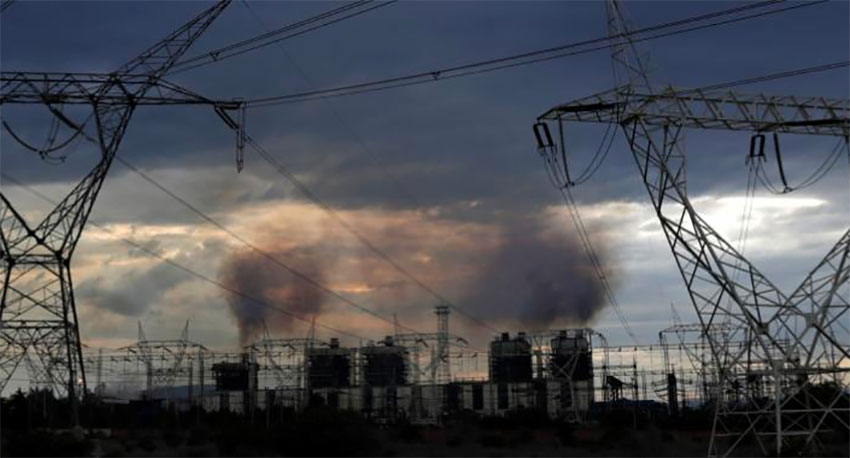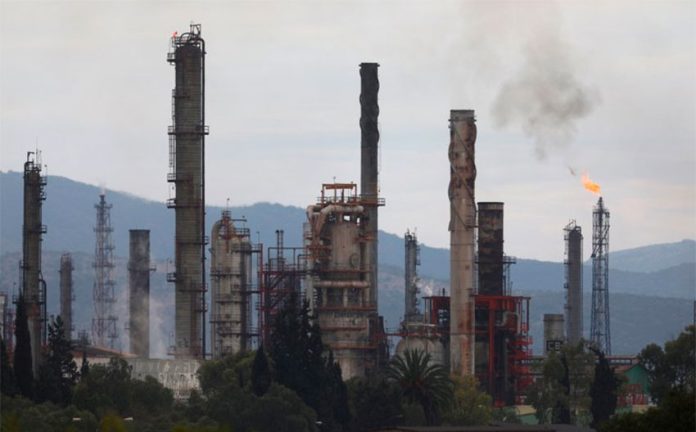A large state-owned power plant in Tula, Hidalgo, violated an environmental safeguard against the emission of deadly contaminants for at least four years, according to a report by Reuters.
The news agency reported Wednesday that it had seen internal Federal Electricity Commission (CFE) documents that show that the Tula thermoelectric plant violated legal limits for the quantity of sulfur in the fuel oil it burned between 2016 and 2019.
Annual operations reports of the CFE, which owns and operates the Tula plant, show that the sulfur content of the fuel oil burned in each of the four years was at least 3.9%.
That is almost double the 2% limit set by the Energy Regulatory Commission (CRE) for six industrial corridors, including one where the Tula plant is located.
The reports seen by Reuters confirmed the suspicion of some environmentalists that the CFE was violating sulfur content rules.
The news agency said it was unable to determine whether Tula’s 1,500-megawatt plant, one of the three largest power generators in Mexico, has continued to burn fuel oil with an excess sulfur content in 2020.
Neither the CFE nor the CRE responded to Reuters’ request for comment. Fines of between US $82,000 and $820,000 can be imposed on companies that violate contaminant limits for fuels but it is unclear whether the CFE has been penalized.
The CFE operations reports also show that the Tula plant, located about 90 kilometers north of Mexico City, is not registering emissions of sulfur dioxide, a harmful contaminant, even though it is legally required to do so.
The burning of fuel oil with a high sulfur content without using filters that capture contaminants causes huge amounts of particles and gases to be emitted into the air.
Three particularly dangerous pollutants that are generated by the combustion of sulfur-heavy fuel oil are sulfur dioxide, nitrogen oxides and particulate matter smaller than 2.5 microns (PM 2.5).
The Tula plant emitted almost 9,500 tonnes of PM 2.5 in 2019, making it the biggest generator of the contaminant in North America last year. It ranked third in the region for nitrogen oxides, emitting more than 14,000 tonnes.

Some studies show that high atmospheric levels of sulfur contaminants can cause premature death and a higher prevalence of respiratory diseases and some forms of cancer.
Energy experts say that the Tula plant is probably operating with few or no filters on its stacks, although Reuters was unable to verify whether that is the case.
Jonathan Dorn, an emissions expert at United States-based consultancy Abt Associates, described the 2019 emission levels at the Tula plant as “crazy,” telling Reuters that the CFE “must not have hardly any control on their stacks.”
The report said five chimneys at the Tula plant emit steady streams of purplish-gray smoke around the clock. The pollution has an acrid smell and causes mild throat irritation, the news agency said.
Adjacent to the plant is Pemex’s Tula refinery, the second largest in the country, where the sulfur-heavy fuel oil is produced.
Despite its capacity to contaminate, the National Energy Control Center announced earlier this year that excess fuel oil produced at Pemex refineries would be used to ramp up energy generation at CFE plants that are widely considered old and inefficient.
The emissions in Tula not only sully the air in the vicinity of the thermoelectric plant but also contribute to contamination in smog-ridden Mexico City, according to some environmentalists and academics.
President López Obrador has said that he wants a clean environment but at the same time his Energy Ministry has taken steps to limit the participation of renewable energy companies in the Mexican market.
In addition, a national energy plan published in June called for “making the most of fuel oil for electrical generation.”
The government did say that the sulfur content in fuel oil would be reduced but didn’t specify how that would occur.
CFE director Manuel Bartlett said in May that the state-owned company is committed to generating cleaner energy but stressed that the transition will take time.
“We want to eliminate fuel oil, but you can’t do that from one day to the next,” he said.
Source: Reuters (en)
